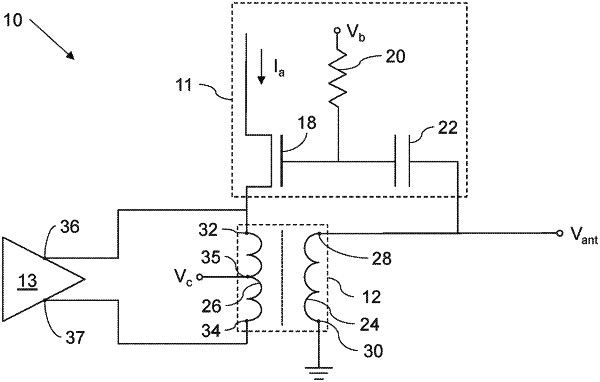| CPC H04B 1/04 (2013.01) [H03L 7/099 (2013.01); H04B 1/1607 (2013.01); H04B 1/18 (2013.01); H04B 1/38 (2013.01); H04B 2001/0408 (2013.01)] | 20 Claims |

|
1. A circuit portion for a radio transceiver, wherein the transceiver is configured to operate in:
a transmission mode in which the transceiver is capable of transmitting radio signals; and
a reception mode in which the transceiver is capable of receiving radio signals;
wherein the circuit portion comprises:
a power amplifier for use when the transceiver is operating in the transmission mode;
a low-noise amplifier circuit portion for use when the transceiver is operating in the reception mode;
a voltage control circuit portion; and
a transformer comprising:
a primary winding comprising a first terminal for connecting to an antenna; and
a secondary winding comprising a first terminal, a second terminal and third terminal, the third terminal being located between the first and second terminals;
wherein:
the power amplifier is connected to the secondary winding;
the low-noise amplifier circuit portion is connected to both the primary winding and to the secondary winding; and
the voltage control circuit portion is connected to the third terminal of the secondary winding, the voltage control circuit portion being arranged to:
apply a first voltage to the third terminal of the secondary winding when the transceiver is operating in the transmission mode; and
apply a second voltage to the third terminal of the secondary winding when the transceiver is operating in the reception mode, the second voltage being different from the first voltage.
|